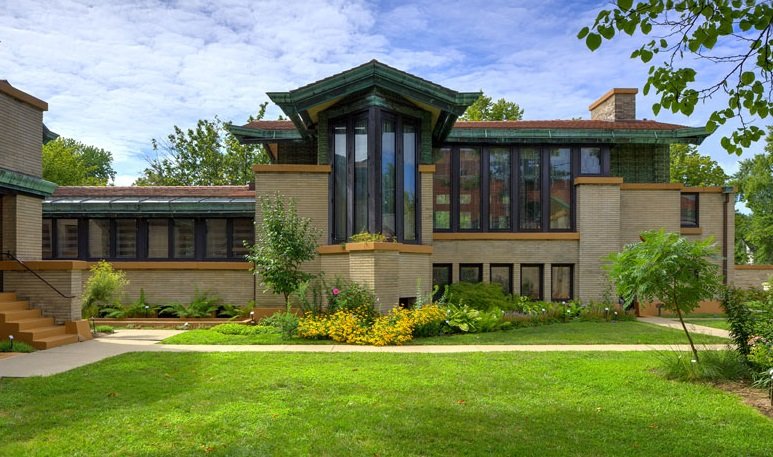#12026. Elegant Prairie Style Facade: Horizontal Lines and Natural Harmony

This image showcases a magnificent example of Prairie Style architecture, developed by Frank Lloyd Wright in the early 20th century. The facade of the building demonstrates all the characteristic features of this style: horizontal lines emphasizing the connection with the natural landscape, wide overhanging eaves with a flat roof, and a strong combination of geometric forms.
Special attention is drawn to the central element of the facade — the protruding entrance with tall vertical windows, creating a contrast with the overall horizontal composition. The building is clad in sandy-yellow brick, which is a typical material for the Prairie Style, providing natural warmth and texture.
The window frames are finished in a dark color, creating an expressive contrast with the brickwork. Large panoramic windows provide abundant natural lighting to the interior and visually connect the internal space with the surrounding landscape — another key principle of Wright's architecture.
In designing your own facade, several techniques inspired by this style can be applied: the use of horizontal lines for visual expansion of space, integration of natural materials (brick, stone, wood), creation of projecting eaves for protection from sun and precipitation, as well as thoughtful placement of windows for maximum natural lighting and connection with nature.